Submarine USS Jimmy Carter, its special tasks and submarine optical cables
- Transfer
We have such devices,
but we won’t tell you about them ...
This article arose while collecting additional information for the post Secretive fiber optic connection: methods and precautions . The scale and technical complexity of the events described in this article deserves the attention of the general public. The translation, in fact, is compiled from several sources. There are no newer articles, but judging by the fact that the boats go, and the NSA is rebuilding new data centers, everything is going according to plan.
USS Jimmy Carter (SSN-23) and its special tasks in the oceans
The USS Jimmy Carter (SSN-23) is the latest nuclear submarine designed by Seawolf. Initially, it was planned to build several dozens of units under this project, but the collapse of the USSR and the transition of the Cold War with the Russian Federation to a sluggish phase led to a reduction in funding for the project and only three boats were built.
However, from the very beginning, this submarine had a special role to play.
Back in 1998, the Defense Science Board (DSB), a committee of civilian experts authorized to recommend the use of certain technologies and scientific ideas to the U.S. Department of Defense, developed a new concept for the operational capabilities of submarines and the technological solutions necessary for this. The concept provided for the possibility of carrying a submarine "unconventional payload for various purposes."
Thus, the SSN-23 nuclear submarine was destined to become a testing ground for testing new technologies for the US Navy. One of them was the MMP (Multi-mission project). In 1999, as a result of a long discussion in Congress, which almost ended with the termination of the project, the order for the production of a boat with such capabilities was nevertheless approved and received from the US Navy in the General Dynamics Electric Boat Division. In the course of work on the boat, its internal volume was increased, which allowed it to bear an unconventional load.
The planned changes included the lengthening of the hull behind the cabin (an additional 30-meter section) and the installation of a special lock chamber, called by its designers the “oceanic interface” (OI - oceanic interface). The modular architecture of the boat allows you to put a large payload into the sea, which makes it possible to configure the submarine to perform a variety of tasks, while fully preserving its basic functions of a warship. The general scheme of the modernized boat has the following form (Fig. 1).
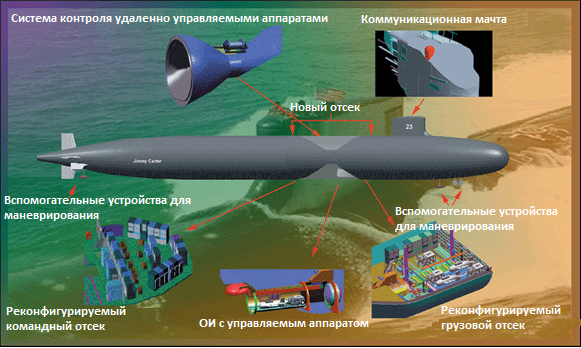
Fig. 1 Structural diagram of the submarine USS Jimmy Carter (SSN-23)
The OI compartment is unique in its own way: it has the configuration of horizontally arranged hourglasses. With such a streamlined design, all the pressure is collected on the "wasp waist", while a significant external volume remains outside the solid hull, but still within the dimensions of the ship. This adds design flexibility when adding systems and compartments, at the same time, provides good hull hydrodynamics, with minimal impact on ship draft. OI provides the launch and subsequent return of both wired and autonomous descent devices, avoiding the difficulties characteristic of using torpedo tubes for such purposes. The external volume available under the housing may contain the necessary additional systems for the operation of special devices. With this approach, a submarine is provided with control over the descent vehicles without spending valuable internal volume of the compartments, otherwise occupied by cable reels or other additional equipment. OI allows you to launch and raise new types of weapons, counteraction systems and sensors, which can now be developed without taking into account the dimensional limitations of torpedo tubes or vertical launchers. In addition, the Jimmy Carter can be equipped with a special communication mast and communication system that meets the requirements for transmitting high volumes of data required during network-centric warfare (network-centric warfare), as well as DSB-recommended auxiliary maneuvering devices needed for operations in coastal areas on small to go.
Despite the changes made to the design, allowing the boat to carry RDT & E equipment (research, development, test, and evaluation - research, development, testing and evaluation), the Jimmy Carter boat retains its full military potential. It can keep watch as part of a naval formation and be used as a submarine in submarine warfare, engage in surveillance and reconnaissance tasks, carry out special covert operations, conduct mine warfare, and participate in offensive operations - the same as the other two ships of this same class (Fig. 2) Fig.
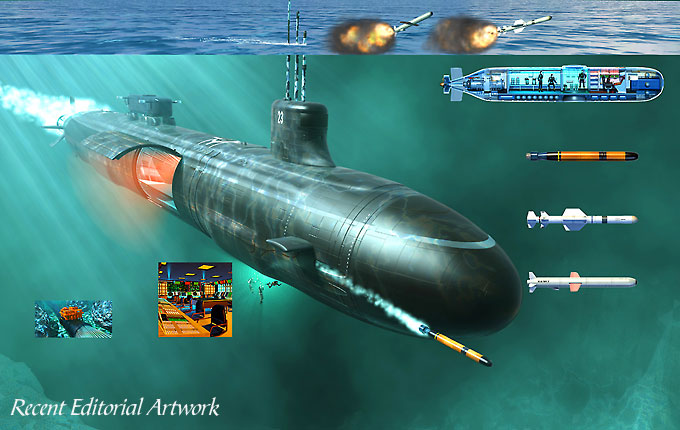
2 The armament of the submarine USS Jimmy Carter (SSN-23) corresponds to other ships of the Seawolf project. Aft ASDS mini submarine visible
The boat is designed to work out future concepts of the Navy’s weapons, counteraction systems, as well as unconventional load - earlier these tasks were shared between several submarines. Jimmy Carter is able to support operations of special operations (Special Operations Forces), having the ability to install a dry gateway camera ( Dry Deck Shelter - (DDS) ) to exit the boat combat swimmers, as well as a special compact autonomous mini-submarine ( Advanced SEAL Delivery System (ASDS) ).
The changes made to the design of the boat cost the American taxpayers $ 1.4 billion.
In 2005, the USS Jimmy Carter was included in the U.S. Navy's submarine fleet, where it continues to serve until today.
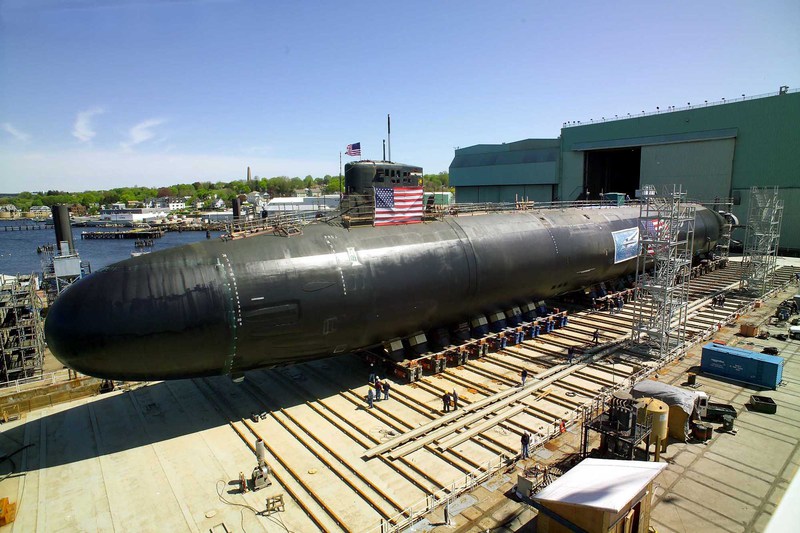
Fig. 3. USS Jimmy Carter is ready to launch. Shipyard Groton.
Submarine cables
The modern underwater transoceanic cable is a complex structure, designed for continuous operation at depths of up to 6000 m, with sections without relaying from 400 to 2000 km. One of the variants of this design is shown in Fig. 4.
The strength of the cable itself is ensured by the supporting structure in the form of galvanized steel twisted wires (3), which can go in several layers, with intermediate insulation. Outside, the armored frame is protected from corrosion by sea water using a plastic coating (1) and insulating Mylar tape (2), which reduces friction between the outer shell and the inner layers when the cable bends by sea currents or when tensile forces occur during underwater earthquakes. Such measures reduce the likelihood of damage to the outer shell.
Waterproofing is provided by a special aluminum pipe (4). With the possible occurrence of microcracks, they are drawn in by oxides, which reliably block the inner layers from moisture. Other types of cables sometimes use a special dry waterproofing that works in the same way - when water enters, the material expands and the leak becomes clogged.
The next level of protection is a polycarbonate layer (5) - a hard and durable plastic that resists bends well and provides additional electrical insulation. A distinctive feature of submarine cables is the presence of a solid copper or aluminum pipe (6), in which there is an optical fiber (8) placed in a water-repellent gel (7). A solid metal pipe can be used as a control conductor, signaling a cable break, as well as a power line for intermediate optical amplifiers. To do this, the voltage must be supplied to the cable, which, taking into account the lengths of the cable sections and the electrical losses on them, can be very high - up to 10,000 volts [2].
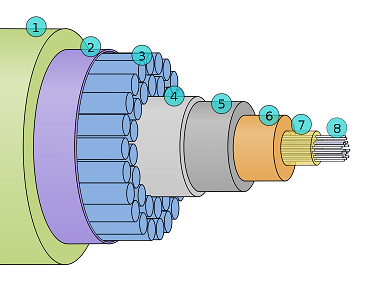
1) Polyethylene outer sheath
2) Mylar tape
3) Twisted steel wire (reinforcing load-bearing frame)
4) Aluminum waterproofing
5) Polycarbonate insulation
6) Copper or aluminum pipe
7) Hydrophobic insulating gel
8) Optical fibers
Fig. 4 Submarine transoceanic cable arrangement
To avoid damage to the cable by anchors or trawls of ships, to protect against currents, cables in coastal areas are laid in special trenches with mandatory protection from above, but at depths of over 300 meters there is usually no protection anymore, and cables are laid directly on the ocean floor.
USS Jimmy Carter special tasks and how the boat is connected to submarine cables
One of the maritime and intelligence experts, Norman Polmar, who worked as a consultant to the U.S. Congress and related to the MMP project, argues that connecting to submarine cables can be done using a specially designed camera that is lowered from a submarine. Why exactly an underwater camera? Polmar said: “Due to the high voltage on the cable, the Navy was not happy with the need to tighten the cable directly to the submarine. In addition, holding the cable by the submarine for a long time can lead to its entanglement, and this is already dangerous for the life of the entire crew. ”
He also said that the USS Jimmy Carter should have a lockable dock for swimmers to enter and exit; special engines that allow the boat to hover directly above the ocean floor for a long time, as well as oxygen supply systems for specialists and power supply to the underwater chamber for equipment operation.
The USS Jimmy Carter replaced the USS Parche, which was operated by the U.S. Navy during the Cold War. According to some reports, Parche managed to connect in 1979 to Soviet military copper cables passing along the bottom of the Sea of Okhotsk. The US National Security Agency does not comment on this story.
“It can't be a regular submarine,” says Mark Dodeman, engineer at Margus Co., Edison, New Jersey. “She must somehow be able to connect to the cable, being directly on the ocean floor, and preventing water leaks. This requires a serious engineering solution. ”
Technical specialists of marine cable repair companies usually perform such work on water in special, clean conditions on the ship. Dirt or seawater when working in a submerged chamber can damage unprotected fiber. In addition, the installation of an inconspicuous listening device requires safe isolation from the electricity used to power the optical signal amplification systems, and, as we said earlier, it can reach very high values.
“If electricity gets into the water, or simply breaks in the circuit, the entire communications system will shut down,” says Peter Runge, research and development manager at TyComm Ltd, Morristown, NJ, one of the largest submarine cabling companies. Loss of communication unmasks the connection and triggers an alarm for the operator, notifying that something is going wrong on the cable. This all makes the chances of success very small. And TyComm and its competitors claim that any cliffs that occurred in their practice were caused by fishing nets, anchors, and even shark bites at the very beginning, but they did not imply a third-party connection anywhere.
There are two main ways to extract the light needed to obtain data: bending the fiber, so that part of the light begins to exit through a thin polymer shell, and by docking another fiber. Fiber bending is an inaccurate science. Perhaps, to obtain data, the NSA will need to connect a second fiber, which makes it possible to fork the luminous data stream into two identical ones.
This poses another problem. “Divide the line and you cut off the light, even for a moment,” says Wayne Siddal, an optical engineer at Corning Fiber in Corning, New York. Even a second interruption will be noticeable by the service provider. And besides, cable companies usually build systems with redundant lines, which are switched in case of damage or breakage.
One of the NSA's retired employees, who were related to their optical communications business, insisted that the NSA had developed a way to connect to fiber without further detection. “Intrusion into the cable is a delicate job, but nothing is impossible.” He and his former employer, the NSA, refused any further discussions on this subject.
After the connection is implemented, the difficult work of interpreting the data begins, and it seems that at that time the NSA had difficulties with this, say those who were familiar with the project. “Imagine that a fire hydrant is being sent to your face - that's about the kind of data stream you get,” said one of the former NSA technical experts. NSA computers at that time were not designed to handle such a fast data flow (article of 2001 - ave .) “This is the classic task of finding a needle in a haystack,” the expert continues, “the only problem is that the search begins with a huge stack that continues to grow every second.”
It cannot change quickly. The NSA has long boasted of having the most powerful computers on the planet, but as budgets became more modest and equipment became outdated, the agency’s technological capabilities began to look less attractive. The NSA’s budget is classified, but people who are involved in these issues say that it is about 2/3 of what it was ten years ago, even if you do not count inflation.
At the same time, new submarine cables carry more and more information. TyCom cable running across the bottom of the Pacific has the ability to transfer 100 million calls simultaneously. In the summer of 2001, Flag Telecom experts installed the switch on their new transatlantic cable, whose eight fibers have a capacity larger than all existing transatlantic cables. Some computer experts say that this will require the NSA to double its computing power and huge costs. They say that the project of wiretaps on optical cables has already cost hundreds of millions of dollars.
Lieutenant General of the NSA Gayden said that such a prospect does not scare him. At a certain point, technology is not a friend of the NSA. But the computing power allows you to process more and more large amounts of data, and as a result, "one analyst will be able to extract the necessary information from gigantic arrays of raw information."
PS Everything is changing. The NSA is currently building the largest data center in Utah , which will be launched in September 2013. Its energy consumption is about 65 megawatts, and storages in the future will accumulate iotabytes of information.
PPS Possible places where you can find the Jimmy Carter submarine Materials used: 1. RADM John P Davis “USS Jimmy Carter. Expanding Future SSN Missions ”
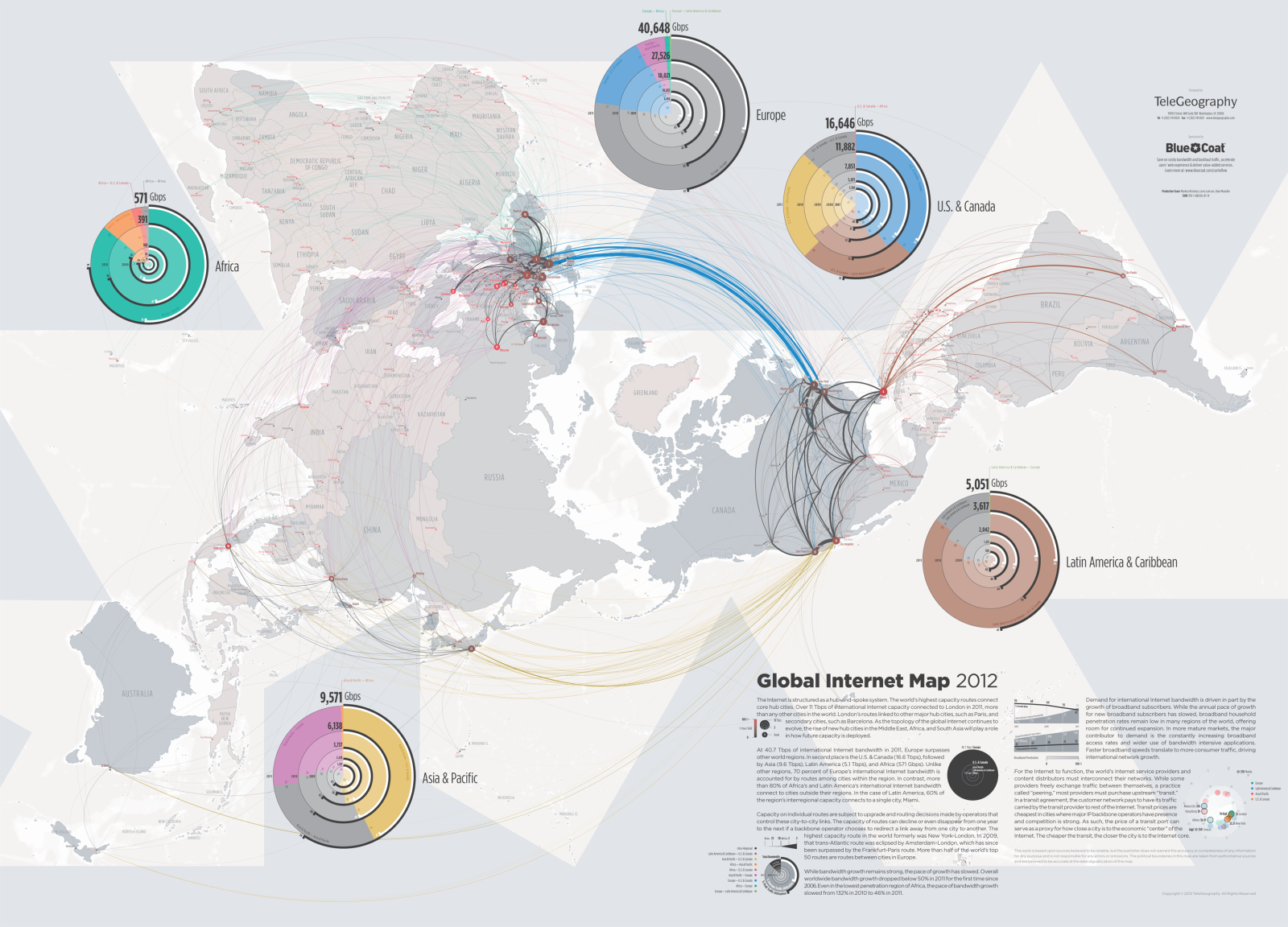
, Undersea Warfare Fall 1999 Vol. 2, No. 1
2. Neil Jr. ZD Net. “ Spy agency taps into undersea cable ”, May 23, 2001
